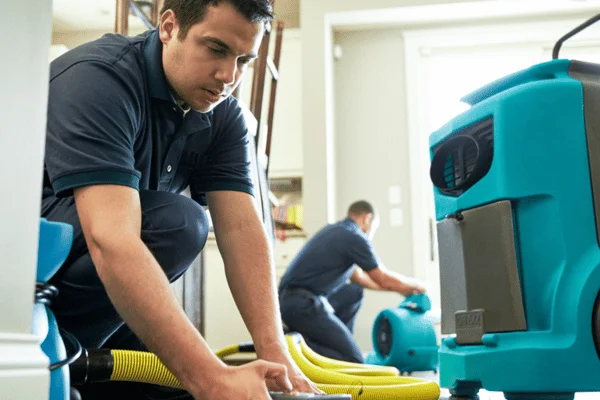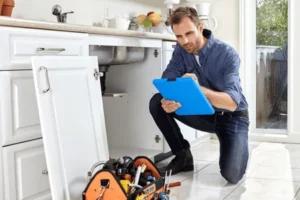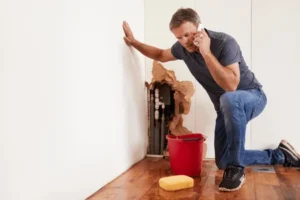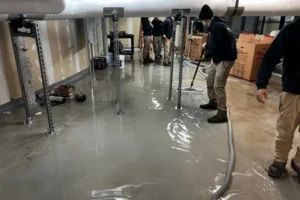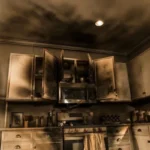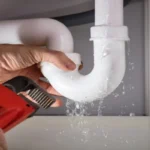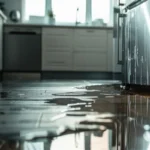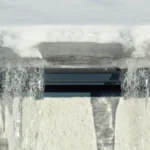Water damage can stem from everyday issues like leaking appliances or sudden storms. These incidents, if ignored, can quickly escalate into major problems. Recognizing the signs early is key to protecting your home. Knowing what qualifies as an emergency and how to respond promptly can make a big difference in preventing further damage.
Emergency water damage can strike at any time, especially during storms or plumbing failures. A quick response is crucial, which is why emergency water removal is the first step in minimizing further damage. Whether you’re dealing with a flood or burst pipe water damage, fast and professional water mitigation services help dry, clean, and restore your space. Acting quickly prevents mold, structural issues, and long-term costs. Trust experts to manage emergencies with care and efficiency.
Let’s take a closer look at how to deal with emergency water damage scenarios now!
What Qualifies as Emergency Water Damage?
Burst Pipes and Plumbing Failures
Burst pipes can flood your home fast, soaking walls, floors, and belongings. Quick action is crucial to prevent lasting damage. Contact professionals for emergency water removal to minimize the damage. Ignoring burst pipe damage may lead to mold and costly repairs. Don’t wait—act immediately to protect your property and ensure thorough cleanup and restoration.
Sewer Backups and Contaminated Water
Sewer backups bring hazardous waste into your home, exposing you to dangerous bacteria and foul odors. Never attempt to clean it yourself—these situations require professional help. Immediate action is critical to prevent health risks and long-term damage. Restoration experts have the tools to remove contamination safely and restore your home to a livable condition.
Storm or Floodwater Intrusion
Floodwater from storms can quickly overwhelm your home, causing damage to everything in its path. Standing water encourages the growth of mold and contributes to the deterioration of structures. If water enters, remove valuables and start drying immediately. Don’t ignore signs of hidden moisture—long-term damage often starts where you can’t see it. Act quickly to minimize harm and protect your property.
Leaking Appliances or Roofs During Storms
A leaking roof or faulty appliance during a storm can lead to severe damage. Water intrusion can cause stains, mold, and structural weaknesses. Shut off water and power to affected areas, then contact professionals. Prompt response helps avoid costly repairs and health risks. Don’t let a small leak turn into a significant problem—take action quickly.
Why Emergency Response Is Critical
In a water emergency, hesitation can be costly. A rapid response is your first defense against spreading damage, mold, and expensive repairs. Learn why immediate action is essential to recovery.
Health Hazards from Mold and Contaminated Water
Water damage can create dangerous health hazards if left unaddressed. Mold growth and contaminated water pose serious risks to indoor air quality and personal well-being. Here are key concerns to watch for:
- Mold Exposure: Damp areas encourage mold growth, releasing spores that trigger respiratory issues and allergic reactions.
- Bacterial Contamination: Standing water can harbor harmful bacteria, increasing the risk of infections and skin irritations.
- Airborne Toxins: Mold produces toxins that can affect neurological functions and overall health.
- Worsened Respiratory Conditions: Individuals with asthma or allergies may experience intensified symptoms due to the presence of mold.
- Skin and Eye Irritations: Direct contact with contaminated water can lead to itching, rashes, and infections.
- Long-Term Health Effects: Prolonged exposure to mold and pollutants can lead to chronic respiratory issues.
Swift intervention prevents these risks, ensuring a safe and healthy living environment. Professional water mitigation services help restore affected areas efficiently and effectively.
Structural Damage and Material Deterioration
Unchecked water damage threatens a building’s integrity, weakening beams, floors, and walls. Signs like warped flooring or sagging ceilings indicate severe deterioration. Delays in repairs lead to costly restoration and potential collapse. Acting swiftly minimizes destruction and preserves your home’s structure. Protecting your investment requires immediate action to prevent long-term damage and maintain a secure living space.
Emergency water damage can occur at any time—especially after storms, flooding, or plumbing failures. Fast response is critical to limit destruction. Our team offers 24/7 emergency water removal and expert water mitigation services to protect your home or business. Whether it’s a leaking appliance or a burst pipe, we arrive quickly, assess the situation, and start the cleanup process immediately. Trust our professionals to restore your property efficiently and prevent long-term issues such as mold, rot, and structural damage.
Insurance Implications of Delayed Action
Taking immediate action after water damage is essential to avoid complications with insurance claims. Delays can result in reduced payouts or even denied coverage. Here’s why a timely response matters:
- Denied Claims: Insurers may refuse compensation for preventable damage.
- Reduced Payouts: Late reporting can lead to lower reimbursement amounts.
- Negligence Concerns: Failure to mitigate damage may be considered negligence, which can limit coverage.
- Policy Requirements: Many policies require prompt documentation and action.
- Escalating Costs: Delays lead to increased repair expenses, which in turn impact claim settlements.
- Financial Security: Quick action safeguards your property and ensures maximum insurance benefits.
What to Do Immediately After Discovering Water Damage
Acting fast after discovering water damage is crucial to minimize harm and costly repairs. Taking immediate steps helps protect your property, prevent further deterioration, and ensure a swift and effective restoration process.
Shut Off Water Sources (If Safe)
If you discover water damage, turn off the main water valve—only if it’s safe to do so. For appliance leaks, shut off individual supplies. Avoid areas with electrical risks. Quick action limits burst pipe water damage and costly repairs. When in doubt, call a professional to manage the situation and stop the flooding safely.
Document the Damage for Insurance
Once the water is contained, document everything for insurance purposes. Take photos of soaked areas, damaged items, and standing water. Write down dates and a detailed list of affected belongings. Save receipts and keep a record of all communication with your insurer. Accurate records help ensure your claim is processed smoothly and fairly during the recovery process.
Call a Professional Water Damage Restoration Company
Once you’ve contained the situation, contact a professional restoration service immediately. Experts use advanced techniques and equipment to extract water, dry affected areas, and prevent mold growth. Providing details about the damage source and extent helps them respond efficiently.
Water mitigation services ensure effective cleanup while minimizing health risks and structural deterioration. Avoid DIY approaches, as improper drying can lead to hidden moisture buildup and long-term damage. Professional intervention not only restores your home safely but also prevents costly repairs. Acting swiftly and relying on experienced specialists guarantees thorough restoration and long-term protection for your property.
How Professionals Handle Emergency Water Damage Scenarios
Emergency water damage requires swift and expert intervention. Trained professionals use advanced techniques to assess, contain, and restore affected areas, preventing further deterioration and ensuring a safe, fully recovered space.
Water Extraction and Drying
Quick water removal is crucial to preventing further damage. Professionals use pumps and vacuums to extract standing water, followed by industrial dryers and dehumidifiers to eliminate moisture. This process helps avoid structural issues and odor buildup. By acting quickly, experts minimize long-term risks and preserve your home’s integrity with precision and care.
Disinfection and Mold Prevention
Once the area is dry, disinfection and mold prevention are key. Experts apply EPA-approved antimicrobial treatments to kill bacteria and sanitize surfaces. They also target mold-prone areas using specialized tools and monitor humidity closely. Preventing mold growth not only protects your health but also ensures your home stays safe after the initial cleanup.
Complete Restoration and Reconstruction (If Needed)
After cleanup, complete restoration may be needed. Professionals assess damage, remove unsafe materials, and begin reconstruction—installing new flooring, drywall, or fixtures. Water mitigation services ensure repairs are thorough, safe, and code-compliant. You’ll stay informed throughout the process, and final inspections confirm your home is fully restored, functional, and ready to enjoy again.
Final Thoughts on Emergency Water Damage Services
Ultimately, recognizing emergency water damage scenarios is essential for protecting your home and health. By acting quickly, you can minimize damage and avoid costly repairs. Remember, whether it’s a burst pipe or a roof leak, every second counts.
Emergency water damage can strike unexpectedly, especially after storms or plumbing failures. Rapid emergency water removal is crucial to prevent mold and structural damage. Professional water mitigation services help minimize long-term damage and restore your property efficiently. If you’re dealing with burst pipe water damage, acting quickly is essential. Trained technicians use specialized equipment to remove water, dry affected areas, and prevent further complications. Don’t wait—immediate response ensures the best outcome when disaster hits your home or business.
Contacting professionals promptly guarantee you have the right help to restore your space effectively. Don’t wait—be proactive and safeguard your property against the devastating effects of water damage.
Frequently Asked Questions
1. How Can I Prevent Future Water Damage Emergencies?
2. What Insurance Covers Water Damage Restoration Costs?
3. How Long Does Water Damage Restoration Typically Take?
4. Can I Stay in My Home During the Restoration?
5. What Types of Equipment Are Used in Water Damage Restoration?

